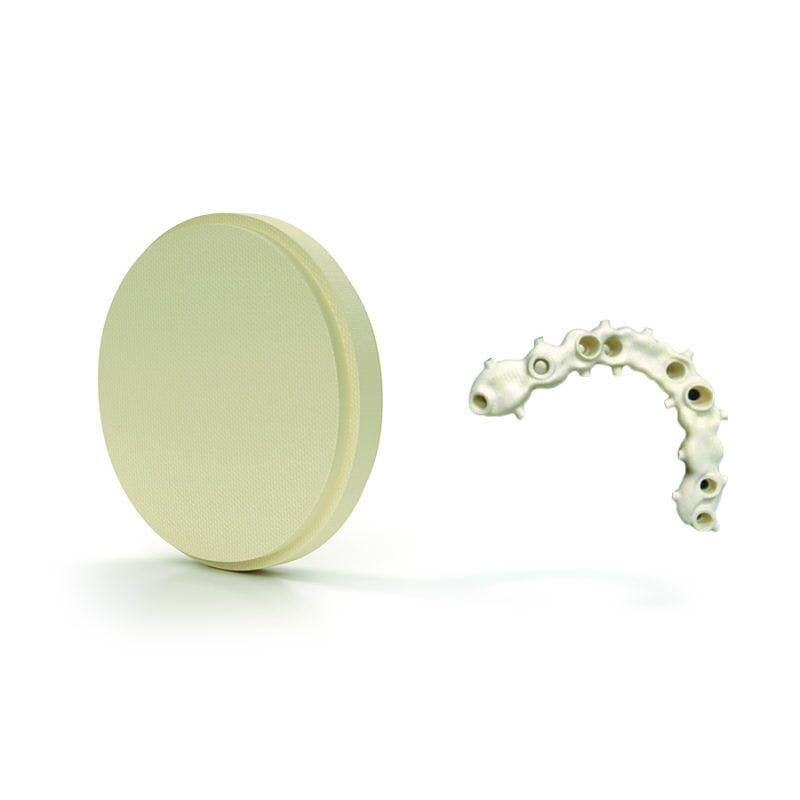- Home•
- Categories•
- Product Store•
- Tools and Accessories•
- TriLor® Puck / Millable Resin Material
“Predictable outcome is predictable income. I use TriLor as a tool to make my implant retained cases predictable.” – Jeremy Wohlers, CDT – Owner of Esthetics in Function Dental Lab
“TriLor has improved workflow in my laboratory and chairside while still achieving a very aesthetic outcome.” – Eugene Royzengurt – Owner of Apple Dental Lab
- TriLor® is a millable fiber-reinforced resin material designed for suprastructures for full arch restorations and bridge frameworks.
- This super-strong resin exhibits natural flex and load parameters, transferring less energy to the implants, making it an ideal support material for implant restorations
- A replacement for unforgiving metal and zirconia frameworks.
- The TriLor® Arch uniquely allows the Dental Professional to design the framework using a lathe or handpiece.
- TriLor 95mm Pucks are for use with ZirkonZahn mills.
- TriLor 98.5mm Pucks are for use with open mills, generally: Roland, VHF, AG, Sirona
